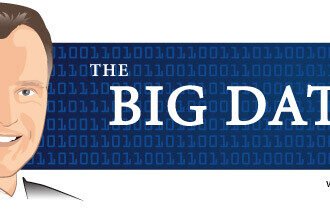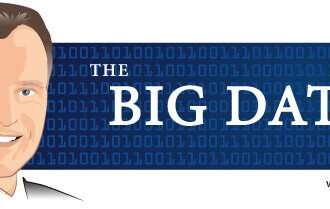
Google has regularly been voted the best company in America to work for – its staff get free meals, generous paid holidays, access to “nap pods” for power-napping during the business day, and are even encouraged to grow their own fruit and vegetables at work.

Google has regularly been voted the best company in America to work for – its staff get free meals, generous paid holidays, access to “nap pods” for power-napping during the business day, and are even encouraged to grow their own fruit and vegetables at work.
And, despite their old “don’t be evil” motto, Google top brass hasn’t set things up this way simply because they are lovely people. Like everything they do, their decisions were based squarely on data – and in this case the data showed that treating their staff well would increase employee satisfaction.
Employers have been using analytics for some time now to understand what makes their staff tick – using metrics such as staff engagement to understand what drives productivity and innovation in the workplace.
The Big Data revolution has accelerated this practice as well as taken it in new directions – companies now have more data than ever on their employees, and more tools and technology with which to analyze this data.
But can – or should – we monitor people who work for us in the same way we monitor our machinery and equipment? Can their behaviour be predicted, or even manipulated, in the same way? Is it even ethical to try?
After all people are far less predictable, more nuanced in our reactions to events or situations, and complex in our motivations. If the productivity of a piece of machinery is consistently lower than it should be, it’s a safe bet that it’s faulty. If a human being’s productivity is dwindling there could be a hundred reasons – illness, coping with stress at home, or beginning to feel demotivated by the job.
The fact that these questions remain unanswered has certainly not stopped many with pushing ahead and trying it out anyway!
Hitachi’s Business Microscope service enables companies to fit their staff with Radio Frequency Identification (RFID) tags which track their movements around the workplace and even monitor sound waves to identify how stressed or relaxed they are when they speak.
In one trial, a retailer was able to increase sales by 15% after they noticed that the presence of a member of staff in certain areas of the store had a high impact on products sold, while in other areas, their presence had very little effect.
The devices aren’t limited in use to businesses whose staff regularly move around to complete their jobs. In a seated office environment, they record how long an employee spends at their desk along with how much time they spend interacting with other staff, who they talk to, the distance they stand from each other during conversations, and the enthusiasm with which they contribute to meetings.
It may sound Orwellian, but how well it is received by staff will probably entirely depend on the way it is used. If it is used as a disciplinary tool focussed on the behavior of individuals, it is sure to lead to resentment. But, when used as a way to gain an overview of the company as a whole, and how it interacts to get the job done, it will probably generate far less complaints – and far more useful insights.
Retaining staff (or reducing “churn”) is often a key priority for businesses. Top talent is always in demand, and assuring that it won’t be poached by competitors is always a challenge. To this end, Forbes carried out a study in 2013 which found a strong link between the rate of pay required to keep a member of staff, and their level of productivity.
Middle-performing staff could be expected to stay loyal even if their earnings dropped as low as 91% of the average salary for their job. High-fliers, by contrast, would begin to look around for other opportunities if their salary is below 120% of the average.
Companies have leveraged these insights to come up with algorithms which predict when they may be in danger of losing a key member of staff – allowing them to step in and intervene.
The fact is that in the age of Big Data analysis, measuring the efficiency of staff, and identifying the factors that may be affecting it, is a relatively simple process, with the amount of data that employers are now capable of collecting from their employees, and the advanced tools which are available for analysis.
The benefits to a company which is able to accurately identify why one particular customer sales representative outperforms his or her colleagues are obvious. However if implemented in a sloppy or discriminatory fashion, they could also lead to serious problems with staff trust, and the level of intrusion into their private lives that they feel.
With many companies now routinely scanning contents of emails and monitoring the activities of their staff on social media, it is clear that some may feel concerned.
Will employees resent this level of analysis of their day-to-day activities? Some certainly will. But as I said before it will depend entirely on how it is implemented. In short, there are far more useful, and less provocative, uses for employee data collection and analysis, than enforcing discipline over who takes the most bathroom breaks.
It is something we are likely to become used to over time – just as in the consumer sphere, we are getting more used to handing private companies our personal information in return for a more convenient service.
And, if the end result is a decision by their employer to double their paid holiday, provide free food, and encourage them to sleep on the job – it is unlikely they will get many complaints!
As always, thank you very much for reading my posts. You might also be interested in my new book: Big Data: Using Smart Big Data, Analytics and Metrics To Make Better Decisions and Improve Performance
You can read a free sample chapter here.

For more, please check out my other posts in The Big Data Guru column and feel free to connect with me via:
Twitter, LinkedIn, Facebook, Slideshare and The Advanced Performance Institute.










